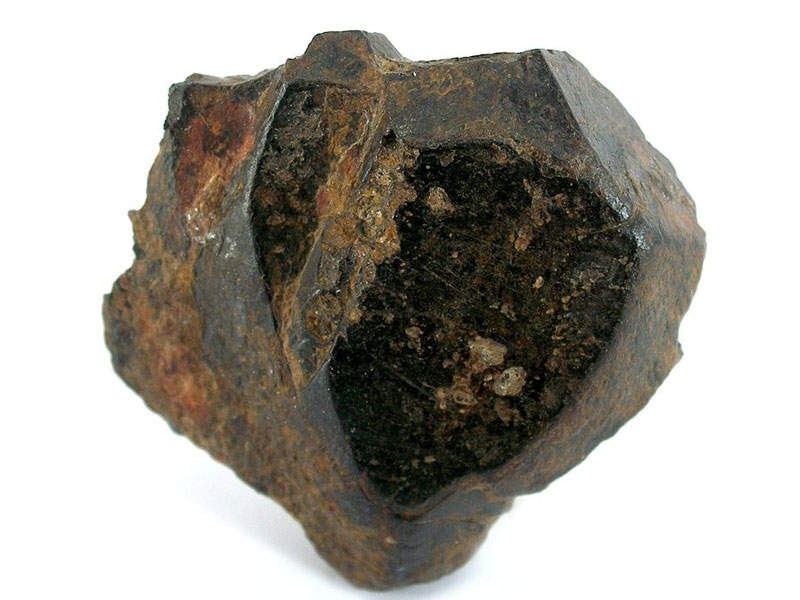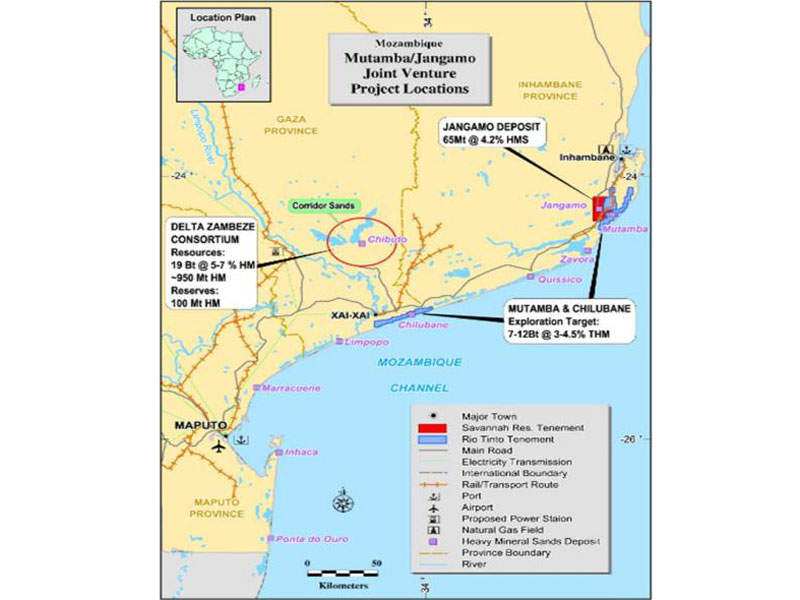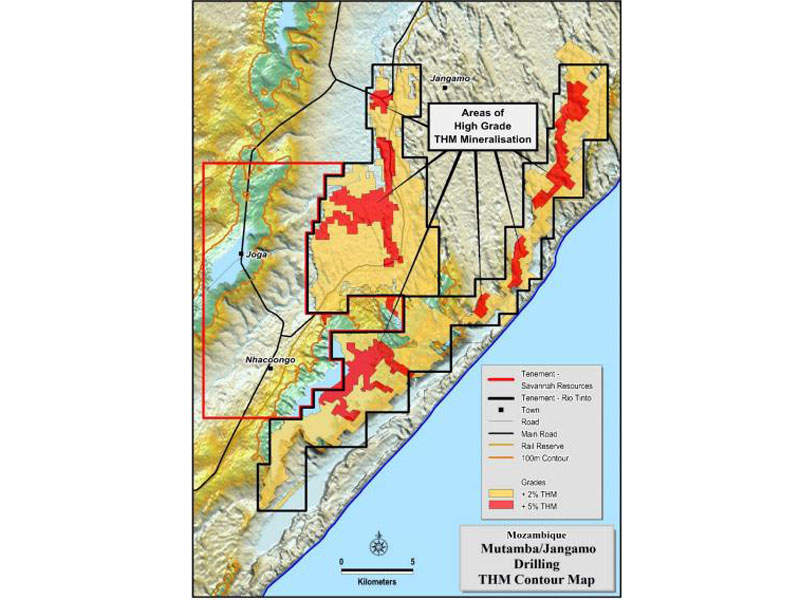Savannah Resources’ wholly owned subsidiary AME East Africa has formed a joint venture (JV) with Rio Tinto International to develop a large-scale heavy mineral sands project in Mozambique, South Africa.
Savannah’s Jangamo licence will be combined with Rio Tinto’s Mutamba titanium mine and its adjacent Dongane and Chilubane projects to form a combined prospect called Mutamba/Jangamo project.
The JV will be operated by Savannah with an initial 10% interest in the combined project, which may increase to up to 51% as the project moves through various stages by undertaking scoping, pre-feasibility and feasibility studies.
Rio-Tinto may enter the offtake sales contract and purchase 100% of the production of heavy mineral concentrate (HMC) from any of the mines.
The scoping study for the project was completed in May 2017, and the first phase of pre-feasibility study commenced in August 2017. First production is expected in 2020 with an average annual production of 456,000t of ilmenite and 118,000t of non-magnetic concentrate.
Mutamba/Jangamo project location
The Mutamba/Jangamo project, which includes Mutamba, Dongane and Jangamo prospects, is located approximately 450km away from Maputo, the capital city of Mozambique, and 40km from the ports of Inhambane and Maxixie.
The prospects cover a total area of approximately 602km²; including licence numbers 562L, comprised of the Chilubane mine (141km²) in Gaza Province; 566L, made up of the Dongane mine (163.6km²) in Inhambane Province; 1336L, comprised of the Mutamba prospect (118.8km²) in Inhambane Province; and exploration licence 3617L, including the Jangamo exploration project (180km²) in the same province.
Rio Tinto affiliate signed an agreement with the Mozambique Government and received exclusive rights to explore the areas.
Mineralisation of the Mutamba/Jangamo project
The four areas have similar mineralisation, with large parts comprised of prograding, siliciclastic sediments that host heavy mineral deposits. The heavy minerals are formed from the Limpopo River over a long period and are present along ancient and current coastlines.
Eight large, separate mineralised bodies have been identified during the drilling, which suggests the mines have a combined potential to host between 140 million tonnes (Mt) and 170Mt of ilmenite content, as well as a further 10Mt to 15Mt of zircon and rutile.
Mutamba/Jangamo resources
The project is expected to hold indicated and inferred mineral resource estimate of 4.4 billion tonnes (Bt) at 3.9% total heavy minerals (THM). It is estimated to contain resources of 451Mt at 6.0% THM.
Mining and processing of ore at Mutamba
Conventional dry mining methods are well-suited to mine the project. The mined ore will be slurried and pumped to the nearby primary concentrator plant (PCP) wherein it will undergo the desliming process to remove fines and gravity separation using spiral circuits.
The PCP will operate at a nominal feed rate of 2,000 tonnes per hour (tph) to produce approximately 800,000tpa of heavy mineral concentrate (HMC). The produced concentrate will be fed into the magnetic separation plant circuit where it will be further processed to produce a magnetic roasted ilmenite product and a zircon rich nonmagnetic concentrate.
The MSP is expected to process HMC and produce approximately 70tph of roasted ilmenite and 15tph of non-magnetic concentrate.
The final products will be transported to the export facility through trucks, while the ilmenite and non-magnetic concentrate products will be stored in a shed before exporting.
Pilot plant at Mutamba/Jangamo project
Savannah Resources completed the construction of the 20tph pilot plant in November 2017 and commissioned it in December 2017.
The plant is expected to provide bulk samples of concentrate for analysis and the preparation of final products for test marketing.
Infrastructure
Rio Tinto’s existing infrastructure, including the camp and equipment, will be used for the combined project, which can also access the existing roads, grid power, water and port infrastructure easily.
Mineral Sands project background
The Mutamba and Jangamo projects have the potential to contain a large ore body that can sustain significant mining operations over an estimated initial mine life of 30 years.
Savannah plans to identify high-grade strandline deposits of a significant size to support the first stage development of the joint development project.
The development objectives, the company believes, can be met only by consolidating the Mutamba and Jangamo projects and hence it was considered as a sensible strategy to form a consortium that enables aggregation of the mineral reserves.






